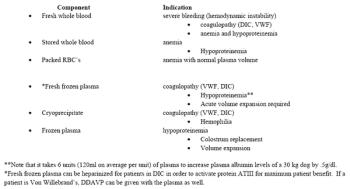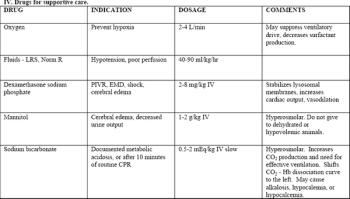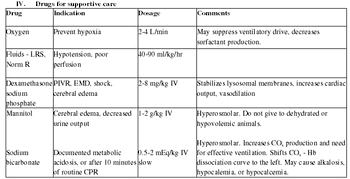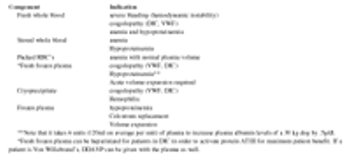Mary Tefend Campbell, CVT, VTS (ECC)
Articles by Mary Tefend Campbell, CVT, VTS (ECC)

Transfusion of blood products is an important lifesaving measure performed frequently in veterinary medicine. The decision to transfuse should not be taken lightly: it is costly and can frequently be clouded by complications. Blood transfusion therapy should be limited to the treatment of anemia, hypoproteinemia, coagulation disorders, or hemodynamic instability.

The role of the veterinary technician in traumatic emergencies is pivotal to the survival of the incoming patient. The physical exam must be quick, thorough, and concise. Utilization of all technical skills from careful visualization, palpation, and auscultation is of the utmost importance.

Anesthetic arrests and patients with reversible conditions should be resuscitated aggressively. Reasons for such a poor success rate include severity of underlying disease, delay in the recognition of CPA, and delay in delivery of appropriate therapy.

The primary goal of nutritional assessment is to identify which patient is at risk for malnutrition. As altered nutritional status is associated with adverse clinical outcomes, it becomes paramount to address the nutritional needs early in the critically ill patient.

Acute abdominal pain is often associated with a variety of disorders in small animals. Abdominal pain can be the result of many different underlying diseases processes, many of which can be life threatening. Clinical signs can range from abdominal distension, prayer-type postures, vomiting and diarrhea, to more serious findings such as collapse, hypovolemic shock, hypothermia, and difficulty breathing. Acute abdominal pain thus requires rapid and efficient diagnostic evaluation with proper treatment to facilitate patient survival.

Nosocomial infections are defined as infections that are neither present nor incubating at the time of hospital admission. Nosocomial infections range from mild to severe, depending on the affected system and resistance of the bacteria. On average, human nosocomial infections result in a 2.5 times longer length of stay in hospital.

The primary goal of nutritional assessment is to identify which patient is at risk for malnutrition.

The role of the veterinary technician in traumatic emergencies is pivotal to the survival of the incoming patient.

Predisposing factors that may preclude a cardiocerebral arrest should be eliminated when possible for every critical patient.

Respiratory emergencies should always be triaged quickly and with precision.

Successful CPCR is dependent on several factors, the most important factor being the true cause of the arrest.

Transfusion of blood products is an important lifesaving measure performed frequently in veterinary medicine.









